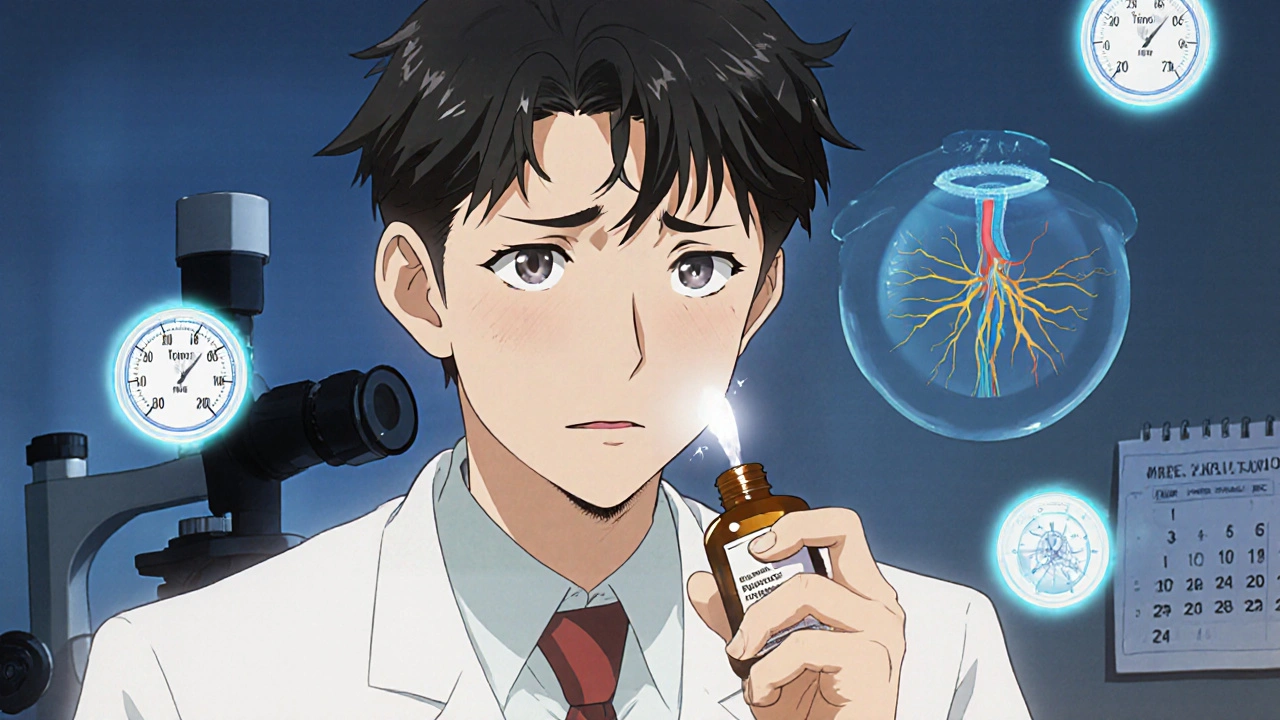Corticosteroid Eye Drops: What They Are, How They Work, and What to Watch For
When your eyes are red, swollen, or burning from inflammation, corticosteroid eye drops, a class of powerful anti-inflammatory medications used to treat eye conditions like uveitis, allergic conjunctivitis, and post-surgical swelling. Also known as steroid eye drops, they work by calming down the immune system’s overreaction in the eye tissue. Unlike antibiotics that kill bacteria, these drops silence the body’s own inflammatory response—making them incredibly effective, but also potentially dangerous if misused.
These drops aren’t just one drug—they’re a group. prednisolone eye drops, a common and widely prescribed form, often used after eye surgery or for severe allergies, are just one example. Others include dexamethasone, loteprednol, and fluorometholone. Each has different strengths, durations, and side effect profiles. What they all share is the risk: long-term or unsupervised use can raise eye pressure, cause cataracts, or even lead to vision loss. That’s why they’re never sold over the counter and always require a doctor’s order. People often think, "If it helps, more must be better," but with these drops, that mindset can backfire fast.
Related to this are ocular steroids, the broader category that includes both eye drops and injectable or oral forms used for severe eye inflammation. The same principles apply: control inflammation, but don’t let it become a dependency. Many patients don’t realize their eye redness returned because they stopped the drops too soon, or worse, kept using them after the problem cleared. That’s why doctors stress tapering schedules and regular follow-ups. You’re not just treating a symptom—you’re managing a delicate balance in your eye’s immune environment.
Looking at the posts here, you’ll find real-world connections. One article dives into prednisolone and how it stacks up against other steroids, giving you a side-by-side look at potency, safety, and what your doctor might choose. Another covers how inactive ingredients in generics can trigger reactions—something you should know if your eyes sting after using a new bottle. There’s even a post on how diet affects skin inflammation, which matters because the same immune triggers that cause psoriasis can flare up in your eyes too. These aren’t random links—they’re pieces of the same puzzle.
What you won’t find here are vague warnings like "use with caution." You’ll find clear comparisons, real patient stories, and practical steps to avoid common mistakes. Whether you’re using these drops right now, were prescribed them last year, or just want to understand why your doctor won’t refill them without a checkup, this collection gives you the facts you need—no fluff, no marketing, just what works and what doesn’t.
